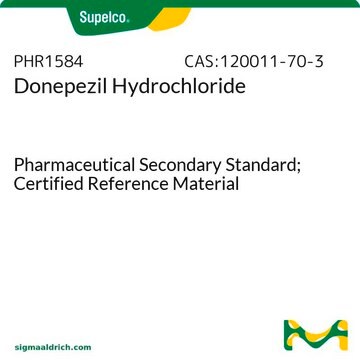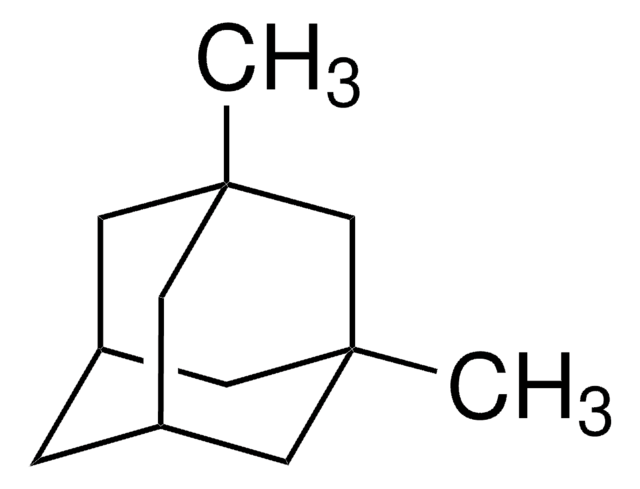M9292
Memantine hydrochloride
≥98% (GC), powder, NMDA glutamate receptor antagonist
Sinónimos:
3,5-Dimethyl-1-adamantanamine hydrochloride, 3,5-Dimethylamantadine hydrochloride, 3,5-Dimethyltricyclo[3.3.1.13,7]decan-1-amine hydrochloride
About This Item
Productos recomendados
product name
Memantine hydrochloride, ≥98% (GC)
Análisis
≥98% (GC)
formulario
powder
emisor
Forest Labs
cadena SMILES
Cl.C[C@]12CC3C[C@](C)(C1)CC(N)(C3)C2
InChI
1S/C12H21N.ClH/c1-10-3-9-4-11(2,6-10)8-12(13,5-9)7-10;/h9H,3-8,13H2,1-2H3;1H/t9-,10+,11-,12-;
Clave InChI
LDDHMLJTFXJGPI-VXMZOEJHSA-N
Información sobre el gen
human ... DRD1(1812) , DRD2(1813) , DRD3(1814) , DRD4(1815) , DRD5(1816)
¿Está buscando productos similares? Visita Guía de comparación de productos
Aplicación
- as a media supplement to serve as a control to study the neuroprotective effects of erythropoietin in N-methyl-D-aspartate receptor-induced toxicity
- to intraperitoneally inject experimental animal to study its effect on traumatic injury
- as a test compound to determine the dynamic range and selectivity of retinal pigment epithelium tissue penetration
Acciones bioquímicas o fisiológicas
Características y beneficios
Código de clase de almacenamiento
11 - Combustible Solids
Clase de riesgo para el agua (WGK)
WGK 3
Punto de inflamabilidad (°F)
Not applicable
Punto de inflamabilidad (°C)
Not applicable
Equipo de protección personal
Eyeshields, Gloves, type N95 (US)
Certificados de análisis (COA)
Busque Certificados de análisis (COA) introduciendo el número de lote del producto. Los números de lote se encuentran en la etiqueta del producto después de las palabras «Lot» o «Batch»
¿Ya tiene este producto?
Encuentre la documentación para los productos que ha comprado recientemente en la Biblioteca de documentos.
Los clientes también vieron
Artículos
Discover Bioactive Small Molecules for ADME/Tox
DISCOVER Bioactive Small Molecules for Neuroscience
Nuestro equipo de científicos tiene experiencia en todas las áreas de investigación: Ciencias de la vida, Ciencia de los materiales, Síntesis química, Cromatografía, Analítica y muchas otras.
Póngase en contacto con el Servicio técnico











